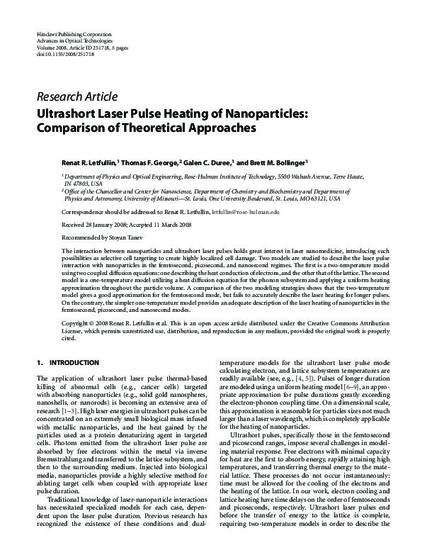
Article
Ultrashort Laser Pulse Heating of Nanoparticles: Comparison of Theoretical Approaches
Advances in Optical Technologies
(2008)
Abstract
The interaction between nanoparticles and ultrashort laser pulses holds great interest in laser nanomedicine, introducing such possibilities as selective cell targeting to create highly localized cell damage. Two models are studied to describe the laser pulse interaction with nanoparticles in the femtosecond, picosecond, and nanosecond regimes. The first is a two-temperature model using two coupled diffusion equations: one describing the heat conduction of electrons, and the other that of the lattice. The second model is a one-temperature model utilizing a heat diffusion equation for the phonon subsystem and applying a uniform heating approximation throughout the particle volume. A comparison of the two modeling strategies shows that the two-temperature model gives a good approximation for the femtosecond mode, but fails to accurately describe the laser heating for longer pulses. On the contrary, the simpler one-temperature model provides an adequate description of the laser heating of nanoparticles in the femtosecond, picosecond, and nanosecond modes.
Disciplines
Publication Date
2008
DOI
10.1155/2008/251718
Citation Information
Thomas F George and R. R. Letfullin. "Ultrashort Laser Pulse Heating of Nanoparticles: Comparison of Theoretical Approaches" Advances in Optical Technologies (2008) ISSN: 16876393 Available at: http://works.bepress.com/thomas-george/99/
